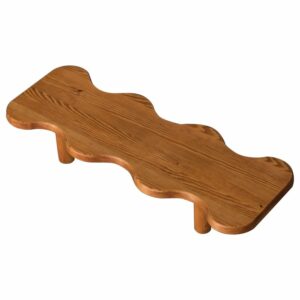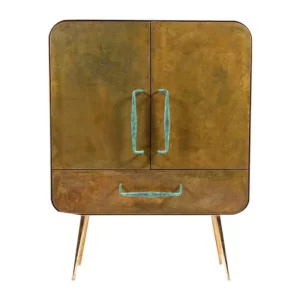
Zoe Feldman

Founded by Zoe Feldman in 2004, Zoe Feldman is an interior design studio known for its fresh, modern take on classic design principles. Based between Washington D.C.’s historic Georgetown neighborhood and New York City, Zoe draws inspiration from a variety of disciplines—art, architecture, and fashion most prominently. Zoe’s playful design sensibility is embodied by an inherent sense of whimsy throughout her work, experimenting with bold colors and intriguing textures while maintaining a foundation in classicism. Zoe takes on residential projects nationwide, working with fashion designers, actors, and other creatives alike. She thrives when working with design enthusiasts, people who are excited to learn from and have fun with the process.
Raised by a family of art and furniture collectors and gallerists, Zoe developed her aesthetic taste from an early age. She studied at Parsons School of Design in New York before working at AD100 firm Mark Hampton under the tutelage of Alexa Hampton. Zoe’s distinct design perspective was born out of the combination of two worlds: the mid-century modern, minimalist school she absorbed from her upbringing, and the classic, old-guard approach she honed at Mark Hampton. This unique combination of experience and exposure allows her to approach her projects with added depth and complexity, quietly educating her clients in a way that establishes a deeper appreciation for the story behind each design element. Zoe takes a more European approach to her projects, one informed by centuries of historical, architectural, and artistic context that come together to create something beautiful and lasting. Despite being rooted in formal art and design principles, her work remains unpretentious—ensuring her projects feel warm, personal, and livable above all else.
1. Could you tell us how your journey into interior design started?
After college, I started out in advertising. It quickly became apparent that it was not the right industry for me. I had grown up around modern art and mid-century modern furniture (my parents and grandparents were collectors) and had always been drawn to interiors, and my family encouraged me to think about design as a career. I enrolled at Parsons and got an internship under Alexa Hampton at Mark Hampton, the iconic firm started by her dad. I learned so much from her and eventually went on to start my own firm when I left New York.
2. Looking back now, do you think there has been a defining moment in your career?
I will never forget when my mom came to visit me at work in New York, and my boss at the time, Alexa, told her that I really “have it.” It was super validating and was the first time I felt seriously empowered to go after a professional dream. Having that vote of confidence meant everything to me.
3. What do you think is the key to a successful interior design?
Know the principles before you break them. If you start with a classical foundation, you’ll be able to get creative in a way that maintains the integrity of the space. The eclectic elements will look purposeful, not chaotic.
4. How do you start your interior design projects? Do you usually start with a certain element of design or a keyword? Could you perhaps walk us through how you’d tackle a new project?
We start by interviewing the client on their lifestyle and personal style. Great design functions seamlessly for the person actually using the space. Using that information, we create a project “mission statement” to act as a North Star throughout the design process. This helps us pull inspiration and start creating a color story.
5. What was one of the hardest learned lessons in your career?
If you have a bad gut feeling about a prospective client, trust it. There is (almost) no amount of money worth white-knuckling it through a treacherous design experience. When I override my instincts, it usually turns out to be unpleasant for everyone involved, and the end product suffers, too.
6. What was one of the best pieces of advice you have received?
From my friend Lesley’s dad, the late, great architect Paul Devrouax: Hire people who are better than you.
7. What is the part of your job that you like the best?
The people. I am an extreme extrovert. I love getting to interact with interesting people every day, and I get inspired both by my clients and the people I work with, from my staff to the architects and builders we collaborate with.
8. You talk about how, at one point, you had no option but to expand your team in order to keep delivering quality work. And you have so many creatives in your team, from designers to writers. What do you think is key to having a harmonious team in the office? What are some of the things you do to achieve that?
My team grew really quickly, so figuring out how to properly run an office has been challenging. We hired a human resources firm, which has been great for everyone to know they have an objective third party to go to if they have any issues. Thankfully, my team members seem to genuinely enjoy each other and communicate openly. Now I’m learning to let my more tenured employees use their knowledge and experience to lead initiatives and make decisions for their teams. It’s a strange adjustment to be less involved in day-to-day activities! We also implemented a quarterly sales bonus that applies to all team members—from design to marketing to accounting. It encourages everyone to feel like they are part of the larger mission and working towards a common goal.



9. How do you fuel your creativity? What inspires you?
Travel, cinema, and being around other creatives. I’m inspired by other people’s creative processes. I’ve been reading music producer Rick Rubin’s book on how to make art, and it’s given me so much perspective. Creativity is a way of being, not necessarily an end goal to strive for. He is an out-of-the-box thinker, and I am inspired by those types. They give me permission to think larger and differently.
10. How do you think the interior design industry changed/evolved over the last decades?
People want to maximize the use of all the rooms in their homes. There’s less preciousness in luxury design. Even formal entertaining spaces have a sense of approachability that feels more modern and less archaic. People want both comfort and beauty simultaneously.
11. What would be your advice to beginner interior designers?
READ. Read everything about designers and art that you can get your hands on. Educate yourself so you can learn what you like. Develop a vocabulary for design so that you feel properly informed during your first internship. That is my other advice: Get an internship. There is no replacement for hands-on experience. Remember that great work takes time and practice and does not come from one source. It’s a journey–soak it all up!
12. What are your 3 favorite pieces from the Philia Collection?
-
Crocodile Low Table by Atelier Thomas Serruys
€5,06013. Finally, what are your upcoming projects? Anything you’d like to share or add to the interview?
We have two very exciting projects in New York coming out next year that we can’t say much about! Stay tuned.



